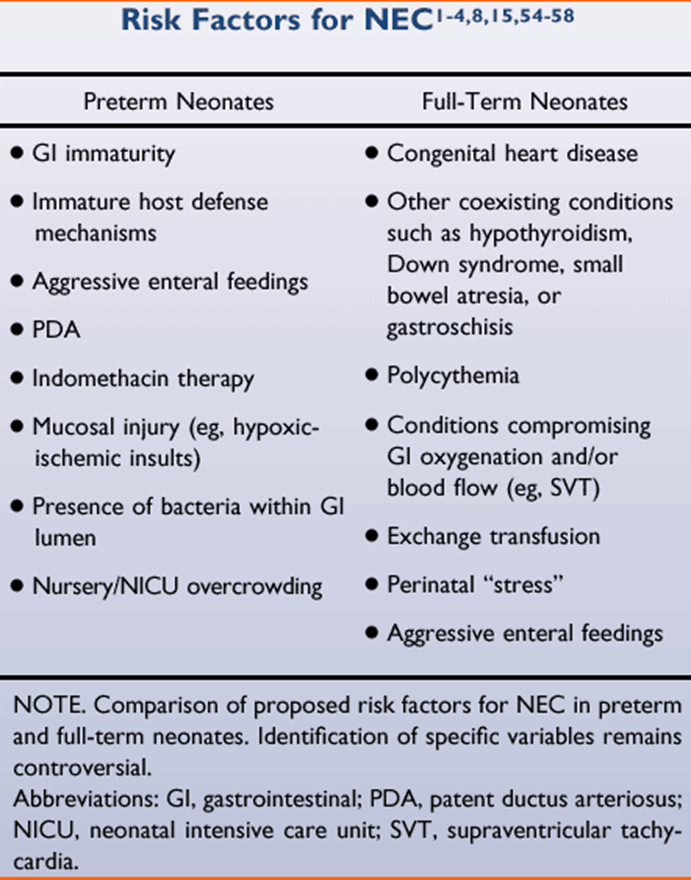A 30 weeks' gestation neonate born with low Apgar scores is in the neonatal intensive care unit with respiratory distress syndrome and underwent an exchange transfusion for anemia. Which factors place the neonate at risk for necrotizing enterocolitis? Select all that apply
hyperthermia
low Apgar scores
preterm birth
respiratory distress syndrome
exchange transfusion
hyperglycemia
Correct Answer : B,C,D,E
A. Hyperthermia is not typically associated with an increased risk of necrotizing enterocolitis.
B. Low Apgar scores indicate that the baby had difficulty adapting to life outside the womb and may have suffered from hypoxia or acidosis.
C. Preterm birth is a significant risk factor for necrotizing enterocolitis.
D. Respiratory distress syndrome is associated with prematurity and is a risk factor for necrotizing enterocolitis.
E. Exchange transfusion, a procedure often performed in neonates with severe jaundice or anemia, is associated with an increased risk of necrotizing enterocolitis.
F. Hyperglycemia is not typically associated with an increased risk of necrotizing enterocolitis.

Nursing Test Bank
Naxlex Comprehensive Predictor Exams
Related Questions
Correct Answer is A
Explanation
A. Acknowledging the child's fear and helping her develop coping strategies is a supportive approach to address the fear of cats and dogs.
B. Avoiding the playground may reinforce the fear rather than helping the child overcome it.
C. Forcing the child to face her fears may exacerbate her anxiety and is not recommended.
D. Minimizing the child's fears and insisting that she go to the park may invalidate her feelings and increase her distress.
Correct Answer is D
Explanation
A. While funding is important for sustaining health promotion activities, it may not be the key strategy for success.
B. Adequate staffing is necessary for program implementation but may not be the most critical factor for success.
C. Finding an audience is essential for targeted interventions but may not ensure the success of the program on its own.
D. Partnership development, especially with community organizations, healthcare providers, and governmental agencies, can enhance resources, reach, and sustainability of health promotion activities.
Whether you are a student looking to ace your exams or a practicing nurse seeking to enhance your expertise , our nursing education contents will empower you with the confidence and competence to make a difference in the lives of patients and become a respected leader in the healthcare field.
Visit Naxlex, invest in your future and unlock endless possibilities with our unparalleled nursing education contents today
Report Wrong Answer on the Current Question
Do you disagree with the answer? If yes, what is your expected answer? Explain.
Kindly be descriptive with the issue you are facing.
